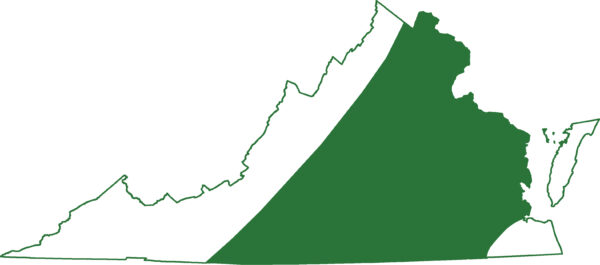Fact File
Scientific Name: Eurycea guttolineata
Classification: Amphibia, Order Urodela, Family Plethodontidae
Size: Up to 8 inches
Identifying Characteristics
This is a yellowish salamander with three dark lines going down the body; one on the back and one down each side and extending onto the tail. The tail can be half to two-thirds of its total length. The belly is light colored with large dark mottling.
Distribution:
In Virginia, the distribution is best approximated as east of Interstate 81. Three-lined Salamanders are usually found under rocks or logs along the banks of forested streams, or their floodplains. In the Coastal Plain, they are often found under logs and other cover objects around swamps and seeps.

Did You Know?
This is one of the few salamander species that has not been found to be territorial.
Role in the Web of Life
These nocturnal salamanders prey upon a variety of invertebrates. Mating probably occurs in the fall and early winter. Females are believed to lay approximately a dozen eggs singly in streams and swamps, but do not remain with the eggs. Eggs hatch in the spring and larvae metamorphose in late summer or early fall.
Conservation
Species appears to be secure in Virginia.
Last updated: July 18, 2024
The Virginia Department of Wildlife Resources Species Profile Database serves as a repository of information for Virginia’s fish and wildlife species. The database is managed and curated by the Wildlife Information and Environmental Services (WIES) program. Species profile data, distribution information, and photography is generated by the Virginia Department of Wildlife Resources, State and Federal agencies, Collection Permittees, and other trusted partners. This product is not suitable for legal, engineering, or surveying use. The Virginia Department of Wildlife Resources does not accept responsibility for any missing data, inaccuracies, or other errors which may exist. In accordance with the terms of service for this product, you agree to this disclaimer.

